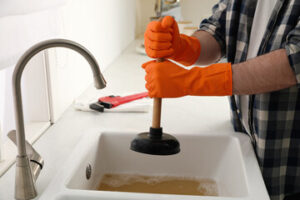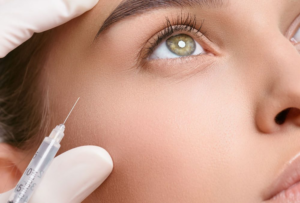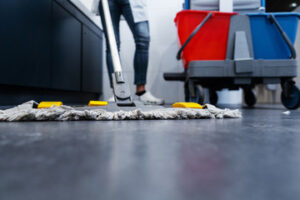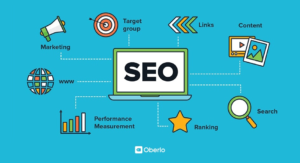Many chemical Philadelphia Drain Cleaners are dangerous to your health and can damage your pipes. Instead, try using baking soda and vinegar.

Caustic drain cleaners contain ingredients like lye and caustic potash that give off heat to dissolve organic material, such as hair and grease. They may require sitting for a while, but can often work in as little as 15 minutes.
While chemical drain cleaners offer a quick solution to blocked drains, they aren’t without their risks. Many of these products contain acids such as sulfuric acid (muriatic acid) or hydrochloric acid, substances that generate heat to break down organic material in the drain and surrounding pipes. They can also damage older pipes made of metal, particularly if they are exposed to the chemicals for long periods of time or in high concentrations.
Caustic drain cleaners, which include lye-based drain openers, give off intense heat that breaks down and melts the material blocking the pipe. While caustic, these types of cleaners are the least dangerous to use since they don’t have a strong smell and create less water splash. However, they aren’t effective on food waste and can be harmful to pipes if used too often.
Oxidizing drain cleaners, which contain bleach, peroxides or nitrates, take the opposite approach to caustic drain cleaners by giving off oxygen to break down and dissolve organic materials in the drain and surrounding pipes. While oxidizing drain cleaners aren’t as powerful as caustic ones, they can still be useful in breaking down hair, grease and other organic matter that’s stuck in the pipes.
Acidic drain cleaners, which are the harshest of the bunch, typically contain ingredients such as sulfonic acid, hydrochloric acid or sodium hydroxide (lye). They work by creating a reaction with the organic material in the pipe to generate heat and liquefy the clog. These types of cleaners are typically only used by plumbers on substantial clogs as they’re extremely hazardous to humans and the environment, as well as plumbing pipes if they’re exposed to the chemicals for extended periods of time or in high concentrations. They’re also generally not recommended for use on septic systems, as they can kill the bacteria that break down organic waste in the tank.
Oxidizing
Most liquid drain cleaners rely on creating a chemical reaction right inside your pipes. Unfortunately, this method can lead to pipe damage and even leaks. The chemicals also pose health risks and are bad for the environment. To avoid these issues, try a natural drain cleaner. One option is to use baking soda and vinegar. This is a safe, inexpensive, and effective alternative to chemical drain cleaners.
Caustic drain cleaners typically contain sodium hydroxide (lye). This substance works in two ways. First, it gives off heat to break down the clog and melt grease. Then, it releases hydrogen gas to make space for the dissolved material. It can also dissolve organic materials, such as hair and soap scum.
Oxidizing drain cleaners, on the other hand, are milder than caustic drain cleaners. They contain ingredients such as bleach, peroxides, and nitrates. These chemicals cause the organic matter that’s causing the clog to lose electrons and become oxidized. This breaks down the clog and allows water to flow freely through the pipes.
These cleaners are best for removing organic material such as food scraps, hair, and soap scum. They can also be used to break down grease in kitchen sinks and grease traps.
Acidic drain cleaners are the harshest type and should be avoided if possible. They contain strong acids, such as sulfuric acid and hydrochloric acid. These chemicals can damage metal pipes, especially if they come into contact with them for an extended period of time. They’re also dangerous for human skin and should only be used when all other options have failed.
When using liquid drain cleaners, follow the manufacturer’s instructions and avoid pouring them near your drain cover. These chemicals can be extremely toxic if inhaled or ingested and should never be used around children. To avoid a toxic reaction, try pouring hot water down the drain before using a drain cleaner. This will help the chemical disperse and minimize your risk of exposure. It’s also a good idea to wear rubber gloves and goggles when using a chemical drain cleaner.
Chemical
Chemical drain cleaners work with powerful chemical reactions to break down organic material into smaller molecules that can be removed from the pipe. While these products can be effective for many types of clogs, they also present significant risks to your health and the environment.
Most chemical drain cleaners are liquid solutions that can be poured down the drain to dissolve blockages. They are often heavier than water, allowing them to sink through standing water and reach the clog. Due to their strong chemical nature, these cleaners are typically stored well out of reach from children and pets, as accidental ingestion or exposure can cause serious medical conditions. Additionally, if these products are not used correctly, they can produce toxic fumes that can irritate the nose, eyes, and throat.
When used properly, chemical drain cleaners can offer a fast solution to many types of clogs. They can be particularly useful in situations where other methods like plunging or a plumbing snake are unsuccessful. However, they should never be used as a replacement for professional sewer services. Instead, a thorough inspection should be conducted to determine the root cause of the clog and a long-term solution implemented.
The most common type of chemical drain cleaner is an acidic one. These products use sulphuric or hydrochloric acid to create a chemical reaction with the clog and dissolve materials like hair, grease, and soap scum. While effective, this type of drain cleaner can be extremely harmful to the pipes and should only be used as a last resort when no other methods are successful.
Another type of chemical drain cleaner is an oxidizing one. These are less harsh than acidic cleaners and use a variety of chemical compounds including nitrates, peroxides, and bleach to create a chemical reaction with the p-trap and other pipe materials. These cleaners can be effective for removing most types of clogs but may take more time than acidic ones.
Both acidic and oxidizing chemical drain cleaners can be dangerous to the environment. They can contaminate water sources and harm local wildlife, which can have long-term effects on ecosystems. They can also be damaging to pipes if not properly disposed of, and can corrode metal drains especially in older homes.
Natural
A natural drain cleaner uses non-toxic ingredients that create a chemical reaction to dissolve and dislodge clogs without damaging pipes. These products typically use ingredients like baking soda and vinegar, salt and hot water, or a mixture of these substances to clear away stubborn blockages in your drains and pipes. While these products may take a little longer to work than their chemical counterparts, they provide a safer option that is more environmentally friendly and doesn’t expose you to toxic fumes.
Using natural cleaning products will also reduce the risk of your kids or pets getting into your cleaners and potentially being poisoned. While many chemical drain cleaners contain toxic solvents that can be fatal if swallowed, natural options do not. This is particularly important if you have small children or pets who might be curious about the chemicals stored in your cleaning cabinet.
For a quick and easy DIY solution, try pouring a can of cola down your drain. This can be a regular Coca-Cola or the diet variety, as sugar will help to break down fats in your pipes. After letting the cola sit for a few hours, you can rinse it out with hot water. While this solution is not as fast-acting as other chemical drain cleaners, it is a cheap and effective way to get your drains back in working order.
Another option is to purchase an enzyme-based drain cleaner. These are a safe and eco-friendly alternative to traditional chemical cleaners, as they are made from bacteria that will feed on the organic waste material in your pipes and drains. While these are not as powerful as the chemical options, they will slowly dissolve and dislodge a clog over time.
While there are plenty of products on the market that promise to quickly and easily unclog your drains, they can be extremely harmful to your pipes and environment. Their corrosive chemicals can eat away at your pipes over time, causing leaks and other issues. They can also contaminate the environment when they are flushed down the drain, causing damage to local ecosystems. For these reasons, it is best to stick with natural drain cleaners that are as environmentally friendly as possible.





